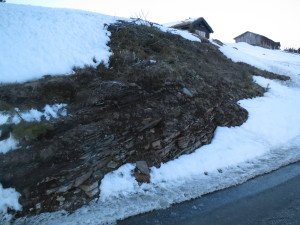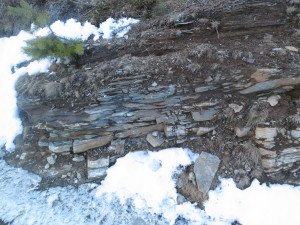Easter is behind us, and being Very Very NorwegianTM, I can provide the politically correct answer to the question «what did you do for the Easter vacation?»: Together with <3, I went to the mountains close to Vinstra in central Norway, to a cabin. Quality time with eggs and bacon for breakfast, then a ski trip in the sun, or long hours in «solveggen» - the «sun wall» - meaning that you sit in a chair just outside the cabin wall, getting brown in the sun, perhaps reading a crime book (or, in my case, a book on Russian history..). It is mandatory to enjoy copious amounts of oranges, Kvikk Lunsj and marcipan.
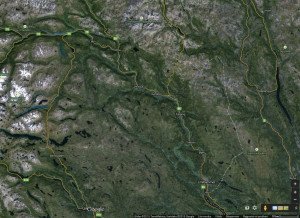
Google-map, to show the location of Vinstra in Gudbrandsdalen in central Norway, an hour drive north of Lilyhammer.
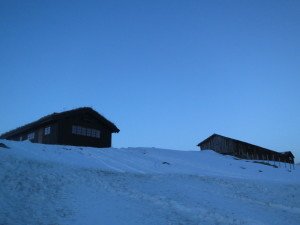
Welcome to the Very Norwegian Hytte in the Very Norwegian Mountains (with a cosy and Very Norwegian Utedass in the old barn next by).
However, geologists always look at what is under the snow – after all, geology is literally the foundation of all sciences. And of cabins.
Under the cabin is a metasedimentary rock, in Norway known as sparagmite. These sediments form a complex, up to five kilometers thick, pile in the area around and north of lake Mjøsa. Some 750 to 600 million years ago, it was a sea, in a rift zone on the flank of the continent called Baltica.
Then came along the Caledonian orogeny, and metaed the sediments – meta as in metamorphosis: The sparagmites happened to be just at the east end of the mountains, and were shuffled enough to turned over and thrusted in many places, but not too much fried and squeezed in the lower parts Down in the Gudbrandsdalen valley.
Not so at our cabin, up in the mountainside. Here, the sediments apparently were so high in the pile, that they got squeezed and dragged out by the Caledonian thrusts sheets running over them, and turned sand and shale into wavy bands of light quartzite and dark phyllite (meaning layered rock, from the Greek, phyllos, leaf). If squeezed even more, it would eventually have turned into a gneiss.
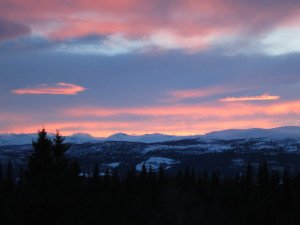
View from the cabin towards the West. The mountain far away are the Southern part of the Jotunheimen, and consist of the Caledonidian thrust sheets that overran the sparagmite.
Much more could be said about the sparagmites, they tell a long geology story. But for now, I just want to show that for geologists, there are treasures, tales to be told everywhere, right beneath our feet. There are stories of tropical paradises and violent volcanoes – and, here, a story of mighty mountain chain, just under a very ordinary Norwegian cabin. That’s why I love this science, and why I can be a nuisance to my <3 and other muggles, always looking down to the ground, up to the mountains and into roadcuts. “It’s a magical world”, as my favourite six-year old Calvin says when he and Hobbes take their final sledge ride out of the cartoon.
And Easters are fine for sledge rides, too.
